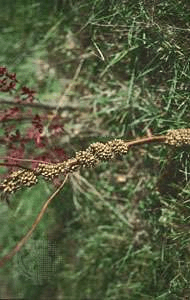Population Interactions | Biology for JAMB PDF Download
| Table of contents |

|
| Population Interaction |

|
| Population Interaction in the Ecosystem |

|
| Types of Population Interaction |

|
| Solved Example |

|
Population Interaction
“Population interaction is the interaction between different populations. It refers to the effects that the organisms in a community have on one another.”
 Population Interaction
Population Interaction
When a certain group of species lives in a certain ecosystem, they have effects on one another. This phenomenon affecting nearby living and non-living beings are called Population Interaction.
Ecology is a vast arena in Biology, which is a study of organisms, their distribution and interaction with each other and the environment. To study the relationship between prey, predators, other interactions and phenomenon like competition, camouflage, mimicry etc., it is mandatory to study the theory of population interaction.
Population Interaction in the Ecosystem
The environment consists of both abiotic (physical) and biotic (biological) factors. Nutrients in the soil, carbon dioxide, water, temperature, atmospheric pressure, wind and osmotic balances are some of the physical aspects required for a living being.
Along with these abiotic factors of the ecosystem, the population can be very much affected by their interactions.
Modes of Interaction between Populations
- Competition: As the name suggests, it is a relationship when two or more species compete for the same limited resources at the same time, which may be food, water, light, or any prey. All these things are crucial for any organism’s growth and survival.
- Predation: This is a relationship where one species depends entirely on the other for its food and survival. The species which feeds on other species is called predator whereas the one that is fed upon is called the prey. This entire relationship is called Predation.
Predator is usually stronger than the prey, and hence it consumes preys during its entire life cycle. In some food chains and food webs, a predator can also fall prey as all living organisms develop a kind of defense mechanisms after a certain period of time.
The words ‘predator’ and ‘prey’ are not always limited to animals. They are implied on the relationship between animals and plants as well. For example – rabbit feeding on carrot, bear eating berry and grasshopper and leaf. - Camouflage: Camouflage literally means ‘to disguise’. It is the phenomena where an organism or a species develops structural adaptation that helps them to blend with their surroundings is known as camouflage. This helps them avoid getting detected by predators.
Types of Population Interaction
In nature, all organisms and their populations interact with one another to some degree or the other. That is how an ecosystem works perfectly! This population interaction is generally between two different species populations. These interactions can be beneficial or neutral or detrimental. Accordingly, there are six types of population interaction.
The different ways populations of two different species interact with each other can be summarized under the following headings.
- Mutualism: When the two different population species interact in such a manner that it is beneficial to each other, then this form of interaction is called mutualism. Lichens are a classic example of mutualism in between fungi and algae. Even plants and animals show good mutualism.
Plants need some agents for pollination and seed dispersal. And these agents are the animals. Animals, in turn, are rewarded with the nectar or the fruits of the plants. But, even in mutualism, there are some cheater species, which may not reward the other species. This leads to co-evolution of the species. - Competition: When the closely related species fight for limited resources, there is a competition between the species. These types of interactions are called competition. This fight for resources can occur between diverse groups of the population also.
Competition can occur even when there is an unlimited supply of resources. Here, it depends on the superiority of one species over the other. In the presence of one population species, the other population species may not use the resources effectively. But if the dominant species is removed, then the other species will use the resources to their full capacity. - Predation: This interaction is a very important one as it ensures that there is stability in the ecosystem. The two main populations interacting in predation are the predators and the prey.
Without the predators, the prey population will go out of control. The species diversity in a community is also maintained by the predators. They reduce the intensity of the competition between prey species. The prey species have also evolved several mechanisms to lessen the impact of predation.
- Parasitism: This is an interaction of populations where a parasitic mode of nutrition is clearly seen, with one species being completely dependent on the other host species for all its meals/ nutrient requirements. Parasitism is clearly seen in many taxonomic groups, right from plants to higher vertebrates.

- Commensalism: In this kind of integration, one species population benefits from the other species population. But the other species population does not benefit nor is it harmed in any way. If you have been to rural areas, you have seen many birds perching on cattle. This is a good example of commensalism.
Here the cattle do not benefit anything nor cause any harm. But as the cattle moves, they stir up the small insects hiding in the grass. It is these insects that the birds feed on, thereby benefiting to large extent. - Amensalism: In this kind of interaction between populations, one population finds itself in harm while the other is unaffected. A good example for amensalism could be a condition where the wider and taller plants inhibit the growth of the nearby smaller plants. A few plants secrete some substances which inhibit the growth of the plants growing nearby. They may also kill them out rightly to remove the competition.

Solved Example
Q. Give some examples of the different kinds of population interactions.
Solution: Examples of Commensalism
- Barnacles and Whales
- Emperor Shrimp and Sea Cucumbers
Examples of Predation
- African Wild dog and Zebra
- Cheetah and Gazelle
Examples of Parasitism
- Aphids(insects) and Plants
- Cuscuta and blueberry plants
|
221 videos|172 docs|126 tests
|
FAQs on Population Interactions - Biology for JAMB
| 1. What is population interaction in an ecosystem? |  |
| 2. What are the types of population interactions? |  |
| 3. How do population interactions affect the ecosystem? |  |
| 4. Can population interactions lead to the extinction of species? |  |
| 5. How can humans affect population interactions in ecosystems? |  |




















